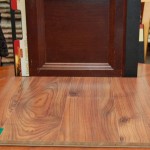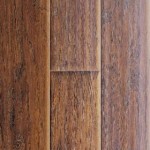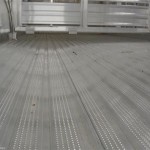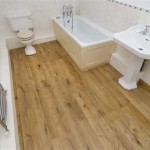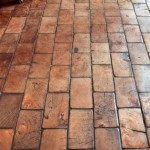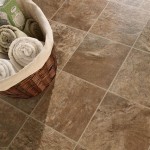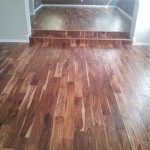No Moisture Barrier Under Laminate Flooring: Essential Considerations
Installing laminate flooring requires meticulous attention to detail to ensure both its longevity and aesthetic appeal. One crucial aspect that often sparks debate is whether a moisture barrier is necessary beneath the flooring. Let's delve deeper into this topic to shed light on the key considerations and provide informed guidance.
What is a Moisture Barrier?
A moisture barrier is a protective layer that prevents moisture penetration into the flooring system. It acts as a shield against water vapor and other moisture sources that can potentially damage the laminate planks, underlayment, and subfloor.
Why Consider a Moisture Barrier?
Moisture can pose several threats to laminate flooring, including:
- Buckling and Warping: Moisture absorption causes the planks to expand, leading to buckling or warping that compromises the floor's integrity.
- Mold and Mildew Growth: Moisture provides an ideal environment for mold and mildew to thrive, resulting in unpleasant odors and potential health hazards.
- Subfloor Damage: Moisture seeping through the laminate flooring can penetrate the subfloor, leading to structural damage and costly repairs.
When a Moisture Barrier is Essential
In certain scenarios, installing a moisture barrier becomes imperative:
- Basement Installations: Basements are prone to moisture due to below-grade construction. A moisture barrier is crucial to prevent moisture vapor from the concrete floor from reaching the laminate flooring.
- Ground Floor Installations: Ground-level installations can be susceptible to moisture from the soil or crawl space. A moisture barrier provides an additional layer of protection against moisture intrusion.
- Wet Areas: Laminate flooring installed in areas exposed to moisture, such as kitchens, bathrooms, or mudrooms, requires a moisture barrier to shield the flooring from spills and humidity.
When a Moisture Barrier May Not Be Necessary
In some cases, a moisture barrier may not be strictly necessary:
- Above-Ground, Dry Locations: Laminate flooring installed on upper floors in buildings with adequate ventilation and minimal moisture exposure may not require a dedicated moisture barrier.
- Vinyl Underlayments: Some vinyl underlayments, such as polyethylene or polystyrene, possess inherent moisture-resistant properties, making a separate moisture barrier redundant.
Conclusion
Determining the necessity of a moisture barrier under laminate flooring requires careful consideration of the installation location and moisture exposure risks. In areas prone to moisture, such as basements or wet areas, a moisture barrier plays a vital role in protecting the flooring and ensuring its longevity. However, in dry, above-ground environments with suitable underlayments, a moisture barrier may not be essential.

What Is A Moisture Barrier And When It Needed For Flooring Inc

When Underlayment Is Not Necessary For Laminate Flooring Mp Global S Llc

Vapor Barrier Under Laminate Floor And Floating Problems

6 Mil Vapor Barrier Underlayment Over Concrete Floors

Silent Silver Underlayment High Density Foam Underlay

Quietwalk Underlayment For Floating Floors The Green Design Center

Laminate Floors 10 Keys To Success For Living Houston Tx

Quietwalk 360 Sq Ft 6 X 60 3 Mm Underlayment With Sound And Moisture Barrier For Laminate Engineered Floors Qw360b1lt The Home Depot

Non Toxic Flooring Underlayment My Chemical Free House

10 Critical Reasons Why You Need A Below Slab Vapor Barrier
Related Posts

